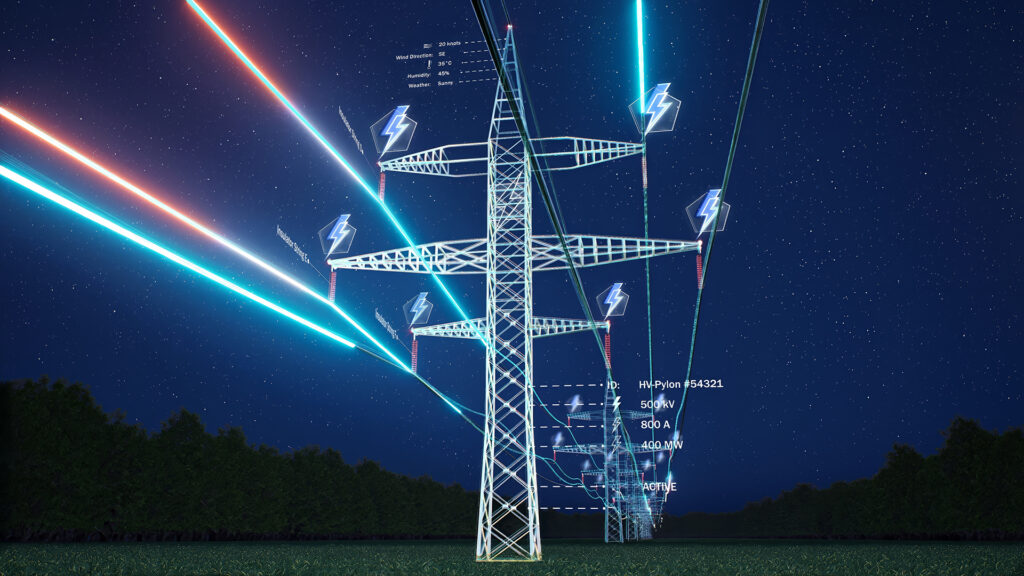The Shift2DC project, led by INESC-ID, is working to overhaul the power system with direct current solutions.
Although direct current (DC) powers many modern technologies essential to today’s world, such as solar cells, batteries, electric vehicles (EVs), and computers, the electrical grid itself is primarily powered by alternating current (AC). Aiming to transform the way DC solutions are used in power systems, the Shift to Direct Current (Shift2DC) project works to build smarter, more efficient and greener energy infrastructure through DC solutions.
Shift2DC has received over €11 million in funding from Horizon Europe and is coordinated by the Portuguese Institute for Research and Innovation INESC-ID. The project will begin in December 2023 and run until May 2027, implementing a top-down, application-independent approach to design, simulate, test, validate and apply DC solutions at both medium voltage (MV) and low voltage (LV) levels. The solution will be tested on four different demonstrators (ports, industrial, buildings, data centers) in three countries (Germany, France and Portugal).
To learn more about the project, its achievements to date, and its overall goals, The Innovation Platform spoke to Hugo Morais, Senior Researcher at INESC-ID and Project Coordinator at Shift2DC.
Can you elaborate on DC solutions and explain how and why this project is working to transform the way DC solutions are used in power systems?
We develop different types of solutions that can be divided into two main categories: software and hardware. We identify the main challenges in the development of DC technologies and tools and actively design innovative alternatives to overcome them.
When it comes to software, we are focused on developing solutions for several key areas. The first is a tool that helps companies and engineers plan their DC deployments. While there are many tools available to support and design AC installations, this is not the case for DC. Therefore, we are working on something that supports the design of DC equipment, taking into consideration the characteristics of DC equipment.

Another tool is related to the design of protection systems considering different configurations of low-voltage grids. Next is the development of energy management systems (EMS) specifically for hybrid grids that take AC and DC into account. The main difference compared to regular EMS is the need to consider the introduction of distributed voltage droop functionality, which is a requirement for DC grids. We are also developing tools to monitor the health of the system. The goal here is to identify conditions in your installation that can cause failures and to detect these failures before they actually occur.
On the other hand, we have a large number of hardware solutions, which further complicates the operation. As nothing is currently available on the market, we are developing new cables specifically for low voltage DC grids. All cables are optimized with DC characteristics and needs in mind, making them more efficient in terms of loss and installation. We are also developing a new DC-DC charging station that takes into account the drooping function.
Other developments include new power distribution units, new active connectors for industrial equipment, two different types of protection for low-voltage grid requirements, and DC-DC battery storage systems. We also have specific power distribution units (PDUs) for data centers that require more centralization.
Can you elaborate on the four main demonstrators for this project and why they were chosen?
Since moving from AC to DC systems is a change, we tried to identify the main use cases where DC can provide benefits.
The first use case we identified was a data center because all the infrastructure (servers) in a data center resides in a DC. Therefore, installing it in a DC as well provides various benefits. For example, the number of conversion stages is reduced, resulting in lower installation costs.
The second use case we identified was in industries, particularly the automotive sector, where many machines on the production line run on DC.
We have also chosen to focus primarily on buildings, in order to leverage connections between production, storage and electric mobility.
Finally, we considered the case of a port. The new directive requires boats and ships at anchor to have zero emissions. One new solution is to connect ships to land, but this requires energy supplies that ports cannot support. One of the main challenges is that some ships operate on DC internally, while others use AC. Implementing a DC-based system simplifies the conversion process and makes it easier to serve different types of users.
What are the main achievements of the project so far and what are the future directions of your work?
The main achievement is that most of the solutions have prototypes and have reached the testing stage. The challenge now is integration, or bringing all the components together. We conduct testing in a lab environment and, in some cases, evaluate individual devices. The next step is to ensure that these devices and tools work together properly to deliver the performance and behavior expected in real-world applications.
Disclaimer
This project is funded by the European Union’s Horizon Europe research and innovation program under grant agreement number 2. 101136131.

This article will also be published in the quarterly magazine issue 24.
Source link

